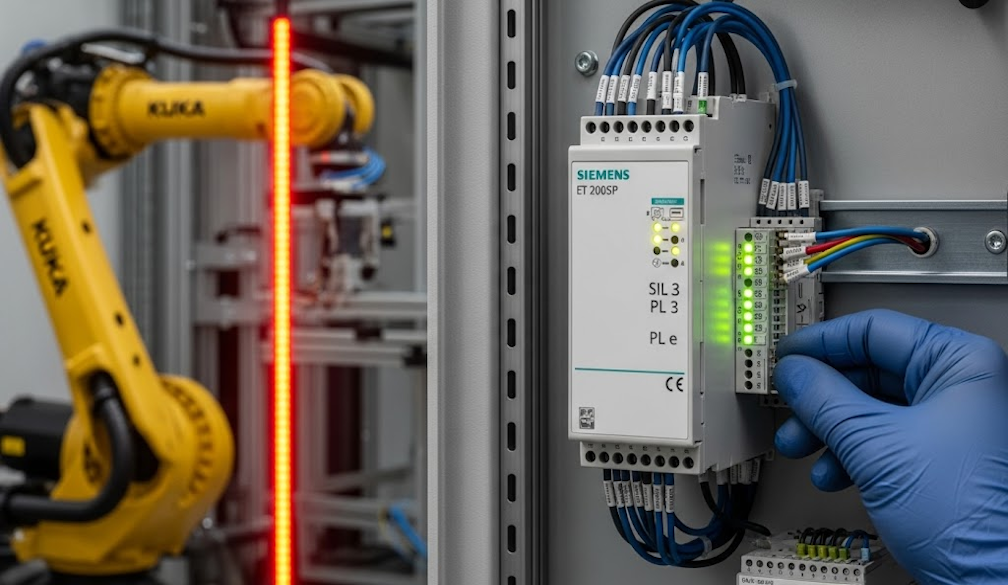Safety Certified I/O Module: Enhancing Reliability in Industrial Safety Systems

In mission-critical industrial environments, safety isn’t just a feature—it’s a legal and operational requirement. That’s why the safety certified I/O module has become an essential component in modern automation infrastructure. These specialised modules are designed to meet rigorous safety standards while ensuring flawless communication between control systems and field devices.
As industrial automation becomes more complex, the need for robust safety systems that meet international compliance has never been more urgent. The safety certified I/O module provides a reliable and scalable way to integrate safety into a system without sacrificing performance or flexibility.
What Is a Safety Certified I/O Module?
A safety certified I/O module is an Input/Output device specifically engineered and tested to operate under strict safety standards such as SIL (Safety Integrity Level) or PL (Performance Level) certifications. These modules are responsible for monitoring and controlling safety-related functions in an automated environment—such as emergency stops, safety light curtains, interlocks, or safety gates.
Unlike standard I/O devices, a safety certified I/O module includes redundant circuits, built-in diagnostics, fail-safe features, and strict validation protocols. These measures ensure that even in the case of a fault or failure, the module responds predictably and safely.
Why Safety Certified Modules Are Crucial
In industrial settings where heavy machinery, high voltage, or chemical processes are involved, the risk to human life and equipment is significant. A safety certified I/O module ensures that safety devices perform as expected and that the system responds immediately in the event of a hazard.
By isolating safety functions into a certified module, manufacturers can ensure compliance with safety standards while reducing engineering complexity. This is especially beneficial in modular, scalable systems where flexibility and redundancy are needed.
How Safety Certified I/O Modules Work
A safety certified I/O module constantly monitors input signals from devices like emergency stops, safety mats, or door sensors. If a safety condition is triggered, the module quickly sends a signal to the control system or directly to actuators to shut down equipment or activate alarms.
The module also performs continuous self-diagnosis to ensure integrity. If any anomaly is detected—such as a wiring fault or failed input—the system enters a fail-safe state. This reduces the risk of unintentional operation during hazardous conditions.
Applications of Safety Certified I/O Modules
These modules are widely used in industries like automotive manufacturing, pharmaceuticals, food processing, mining, oil and gas, and packaging. In all these sectors, operators rely on a safety certified I/O module to monitor access points, prevent machine collisions, and enforce emergency responses.
In robotic environments, the safety certified I/O module controls light curtains and area scanners to halt machines when a person enters a protected zone. In material handling, it monitors conveyor lines and prevents overload or collision. These are just a few examples of how integrated safety adds value to productivity.
Benefits of Using Safety Certified Modules
Using a safety certified I/O module offers multiple benefits. First and foremost, it ensures compliance with global safety regulations, helping organisations avoid legal issues and fines. Additionally, it reduces design complexity by allowing safety functions to be built into standard control systems.
It also improves system uptime. Unlike traditional hard-wired safety systems, modern safety modules offer diagnostic data, enabling predictive maintenance and quicker fault resolution. This means fewer unplanned shutdowns and a more reliable operation overall.
Key Features to Look for in a Safety Certified I/O Module
When selecting a safety certified I/O module, look for features such as SIL2/SIL3 or PLd/PLe certification, diagnostic feedback, hot-swappable components, support for multiple protocols (like ProfiSafe, CIP Safety, or Safety over EtherCAT), and integration with standard PLCs.
Flexibility in I/O configuration, resistance to environmental conditions, and ease of programming are also important. The more adaptable the module, the more efficient your overall safety system will be.
Challenges and Considerations
While integrating a safety certified I/O module simplifies safety compliance, it does require careful planning. Wiring, communication delays, compatibility with safety PLCs, and redundancy all need to be addressed during design.
Additionally, personnel must be trained not just in standard automation principles, but in safety standards and best practices. The success of a safety module isn’t just about the hardware—it’s also about how well it’s implemented.
The Future of Safety I/O in Smart Factories
As factories become smarter and more connected, the safety certified I/O module is evolving to include IoT capabilities and cloud-based monitoring. Remote diagnostics, machine learning algorithms, and predictive analytics are being integrated to identify potential issues before they result in failure.
This convergence of safety and smart tech will make operations safer, more efficient, and highly scalable. Manufacturers that invest in future-ready safety infrastructure will be better positioned to adapt to changing demands and regulations.
Conclusion: Choose Reliability with a Safety Certified I/O Module
A reliable safety certified I/O module is the foundation of any robust industrial safety system. It not only protects people and assets but also ensures uninterrupted operations, compliance with global safety standards, and integration with evolving automation technologies.
By investing in the right safety modules, industries can minimise downtime, increase trust in their systems, and create safer workplaces—something no business can afford to overlook.




